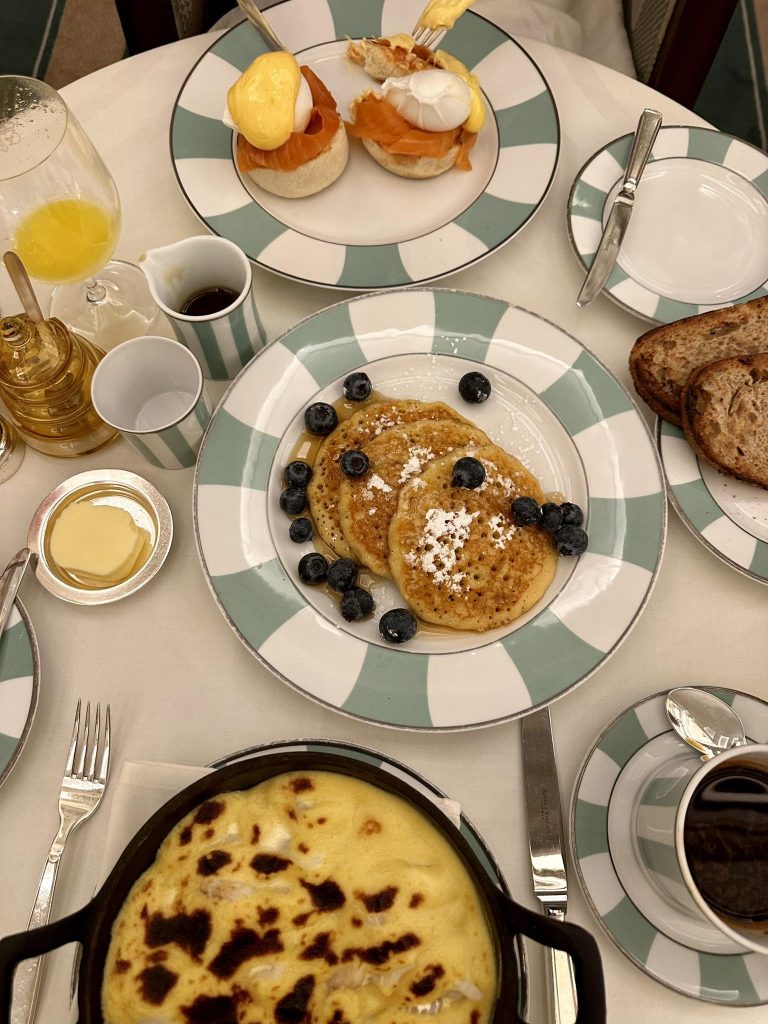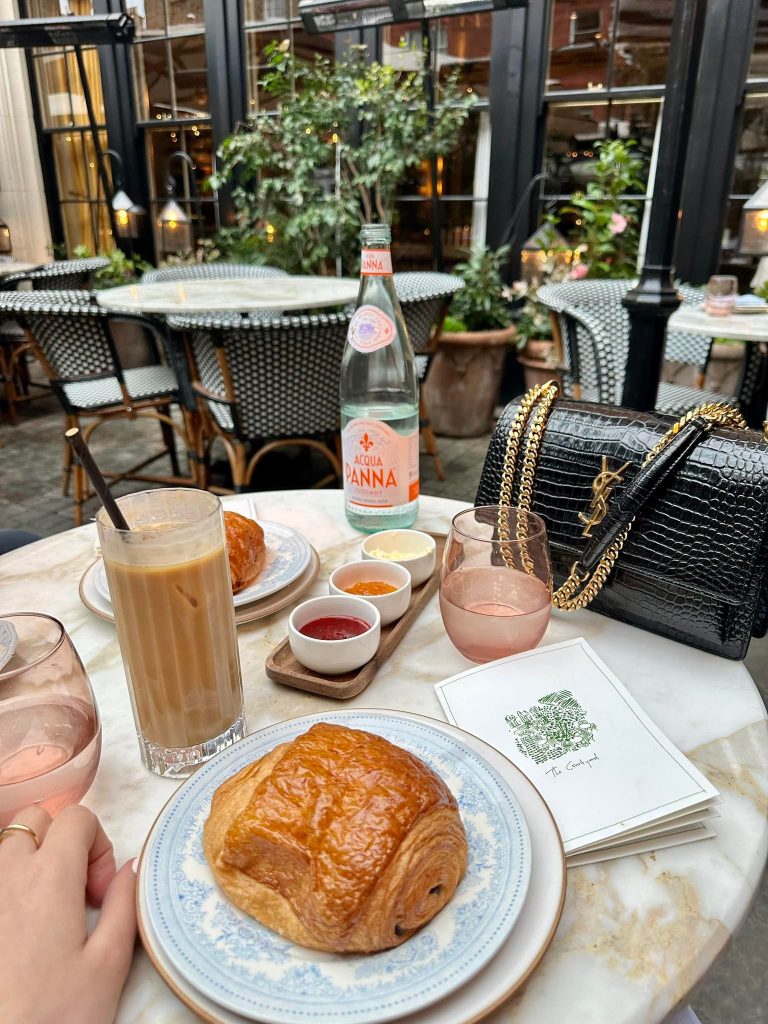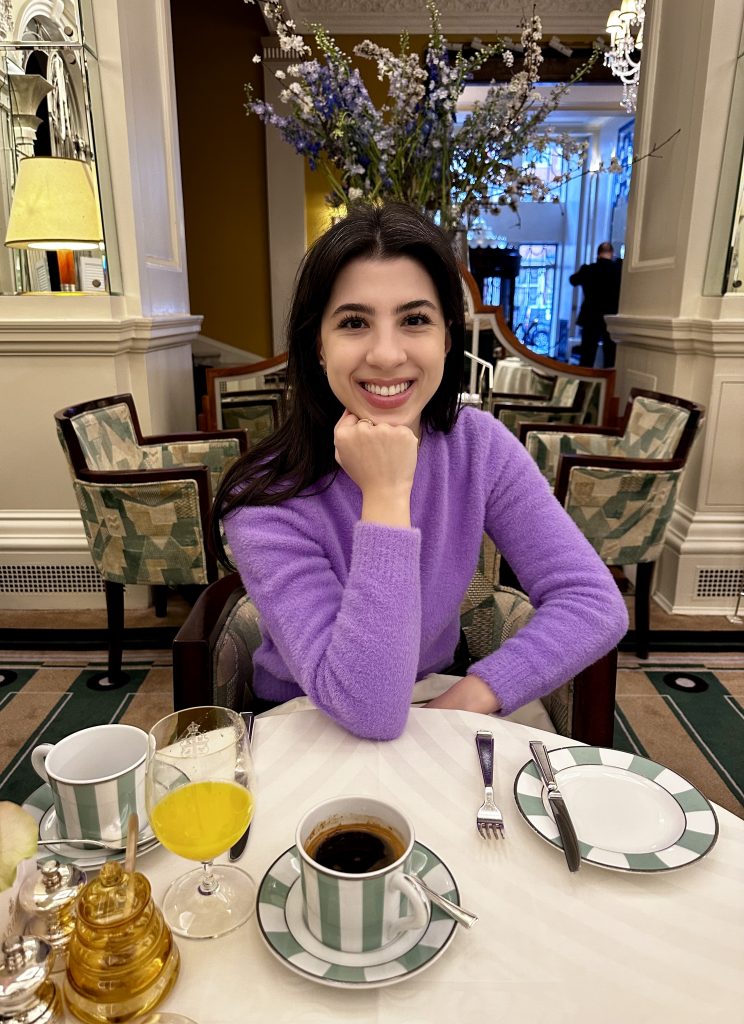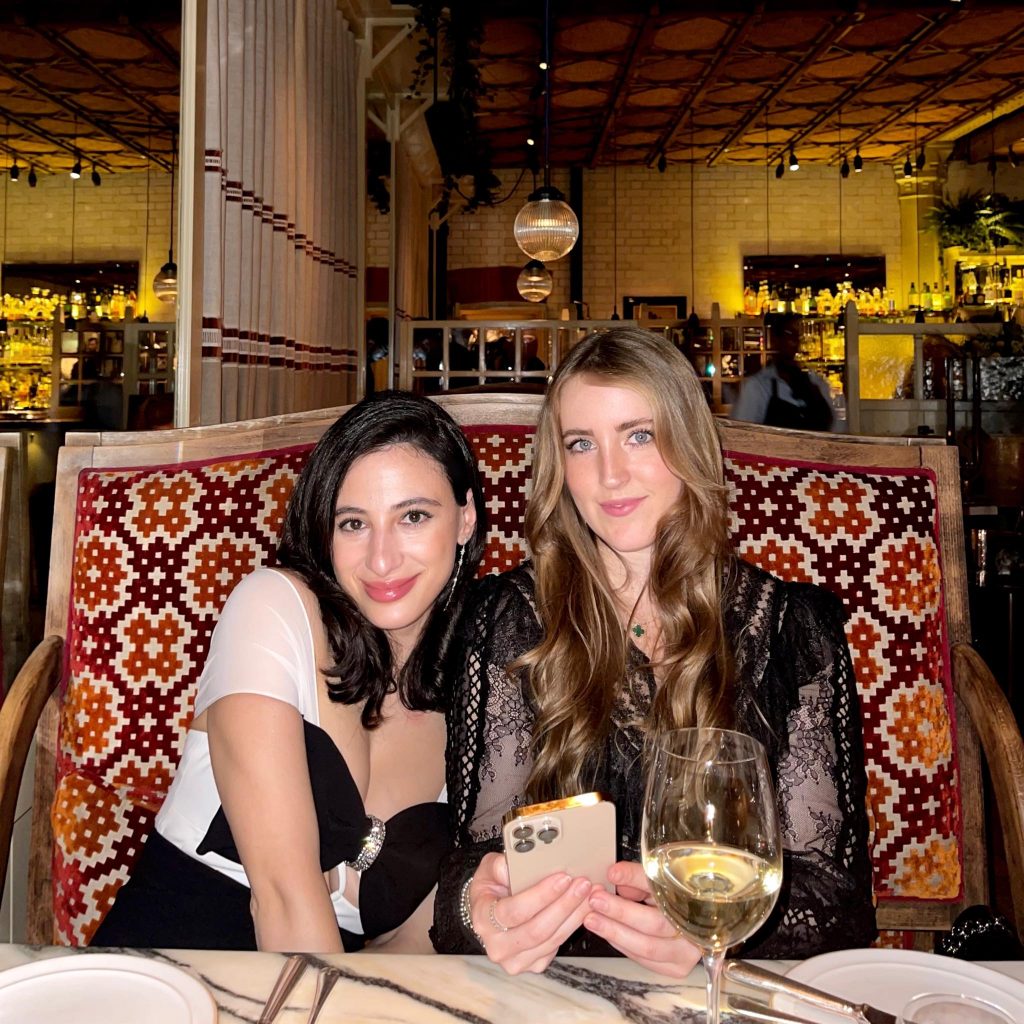Sipping on a cocktail in a hotel bar in Mayfair I check the time – don’t want to be late for dinner. Slim glasses, dimly-lit room, bedazzled bar, delicate steam coming from the kitchen, stuffed music – all in all, a feast of the worldly perceptions! I close my eyes and drift away only to be rudely woken up by a couple fencing with words in the corner, a thought strikes: I wonder what is the recipe of this delight?
I have spent the forty-five days of spring in sixty restaurants in London with an only mission: to solve for what creates the gastro institutuion that persists in the face of changing times. I have savored traditional and non-traditional dishes, meddled in both Michelin studded restaurants and neighborhood bakeries, devoured Japanese, Mexican and French cuisine, borrowed from my past gastro experiences and relied on my business degree to approach the conomendrum like a scientist. I started my quest with etymology that took me straight to “restore” borrowing from restorative broth. To my surprise, I have also discovered that the modern restaurant is only two-hundred years old and even though it was possible to procure food throughout the changing times in the history, restaurant, as we know, it is a pretty recent institution. Behind the phenomenon, of course a French chef, of course with a military background and of course South of France where George Auguste Escoffier, Gordon Ramsey’s and Jamie Oliver’s figurative godfather is orchestrating the kitchen at the Ritz Hotel. Historically, first restaurants were intertwined with hotels, connected by travels – hence the connection with Michelin: as a tire manufacturer, Michelin wanted to encourage the travelers to explore different restaurants mentioned in the Michelin guide to promote the depreciation of the rubber tires! Escoffier reached commercial success when the restaurant’s functionality transformed from restoring to indulgence, from large communal tables to more intimate settings, from whatever was being prepared in the kitchen to a-la-carte menu, from seating schedules to flexible dining and the rest is history!



Today, dining out is indispensable part of modern day life and as a business concentrates on products (dishes, cuisine), pricing (what is the average check during different parts of the day and at different times in the week), promotion (how we find out about the restaurant), and place (the ambiance in the restaurant) but as a pleasure revolves around perception functions and organs – sights (eyes), hearing (ears), touch (body), taste (mouth), and smell (nose). In most cases, a restaurant is neither only a business or only a pleasure – rather a continuum of Epicures and Stoics. Restaurant business is distinguished with high creativity and intense competition – about a quarter of restaurants fail in their first year, while half close their doors in the first three years due to high working capital requirements, issues with the supply of fresh ingredients and other structural problems. For our purposes, we only consider apparent factors, and even though I am tempted to delve into corporate and financial engineering, I will not rely on those plays of success in my noble pursuit. I will not argue whether French cuisine beats Japanese, if fifty pound steak is better than twenty pound burger, vivid lighting or candle light – it is a mere preference and not an essential part of the recipe.



Chiltern Firehouse, as the name suggests, located in a historical firehouse building has been greeting everybody’s favorite Hollywood stars and musicians over the last ten years. Behind the hotel is Hungarian immigrant Andre Balazs who equally calls the United Kingdom and the United States of America home. The Mercer hotel in New York, Chateau Marmont in Los Angeles and the Standard Hotels all around the world also stem from Balazs’s creative-commercial mind. Aside from hospitality assets, Balazs’s portfolio contains relationships with Hollywood royalty: Kate Ford, Uma Thurman and Chelsea Handler. It would not be a complete profile if the necessary parallel is not drawn between Balazs’s hotels and Rooms and Stamba hotels in Tbilisi where Balazs’s ghost lingers. The first two ingredients of our recipe show their faces – charismatic leader and a building with a rich history. Charismatic leaders encompasses legendary personalities such as Nobu Matsuhisa, Gordon Ramsay, Jamie Oliver but for our purposes we stress the business genius behind the charismatic leaders – Richard Caring, who is tenderly reffered as the King of Mayfair, is the creator of more than fifty restaurants, starting from everybody’s favorite The Ivy to the most recent Bacchanalia. The examples of buildings with rich history include The Wolseley, who calls a legendary Art Deco building a home and Sketch, multi-gastro oddly alluring townhouse venue. Those restaurants are mainly located in historical buildings and are classified as Grade-II cultural heritage and require the happy marriage of architects and designers for the renovation and as such pile up the bills resulting in the high bill at the end of everybody’s dinner.


I recently tried Nobu’s affordable cousin – Roka – which has become my favorite restaurant in Dubai. Apparently, the parallel has an intentional history – the restaurateur behind Roka, Indian billionaire Arjun Waney created the conception when he could not book Nobu – an expensive scheduling conflict! Here the recipe calls for two more ingredients – just like all superheros have an origin story, all super restaurants need an epic story to nurture the audiences and restaurant holdings, just like we saw with Caring, have multiplicative effects in the commercial success of the newer restaurants. Arjun Waney’s portfolio has other big names too: restaurants Zuma and Coya, membership only club the Arts Club and other household names. Gymkhana has an interesting origin story which is owned and managed by three siblings – talk about family business.
Many successful restaurants call Claridge’s, the Lanesborough and Bloomsbury Hotels home. The reason is commercial: hotel guests are sourced at the lowest expense for the restaurants and in the business where traffic is the key revenue driver – not only during peak times on Friday and Saturday but on off-peak times on Monday night and Thursday morning. Another ingredient emerges from the mix – access to the customer stream. This could be due to the historical ties between the hotels and the restaurants – a hotel, or proximity to the theater or the movies, coffee shops or busy retail streets, or even a well-crafted marketing strategy which we will not cover here. The point is clear, it is a numbers game at the end – what you spend on rent or marketing to attract your customer.
Let’s take a second to realize that we are talking about the recipe for a restaurant and we have not mentioned the food or the ambiance. It is essential for the restaurant to have a culinary genius as a chef, for example Isaac McHale from the Clove Club, and well laid-out kitchen like the Saltie Girl, music either in the background or bought to the center stage by a DJ, for example clubbing music on Fridays in Sexy Fish and last but not the least, the ambiance determining the vibe of the place, romantic or friendly, first date or an anniversary. For example, Hovarda with Greek cuisine and a grandiose DJ set is perfect for a night out with friends, Colbert in Chelsea for a first coffee date and Daphne’s to celebrate a wedding anniversary. For our purposes, we do not delve deeper into Jikoni’s hybrid tastes, Bob Bob Richard’s gimmick “Press for Champagne” button and Langhan Brasserie’s walls decorated with modernist genius artists – those are more of raisins vs chocolate chips in our cookies as a flavoring rather than part of the cookie’s recipe.



I am back in gastro-heaven with the ingredients of the perfect restaurant floating through my head: charismatic leader, a historic place as a home, intriguing origin effect, multiplicative effect of the holding and a connection to the customer source are the ingredients of the interesting recipe of the success behind Mayfair and wider London restaurants. As agreed not addressing cuisine and ambiance – to each their own.
Even though I was consciously aware of the time passing, looking down at my watch I realize that I am recklessly late for dinner. I raise my hand and signal with a wink of some sort my intention to the server. How was your drink? He asks politely. Wonderful, I reply demonstratively while thinking – I forgot the service from the equation!
P.S. If you want to follow my British gastro adventure, follow me on Instagram at Her Majesty Appetite (@HMAppetite). I promise your feed will be brightened by mouth watering dishes.
Bon Appetit!
Ana Gvalia


